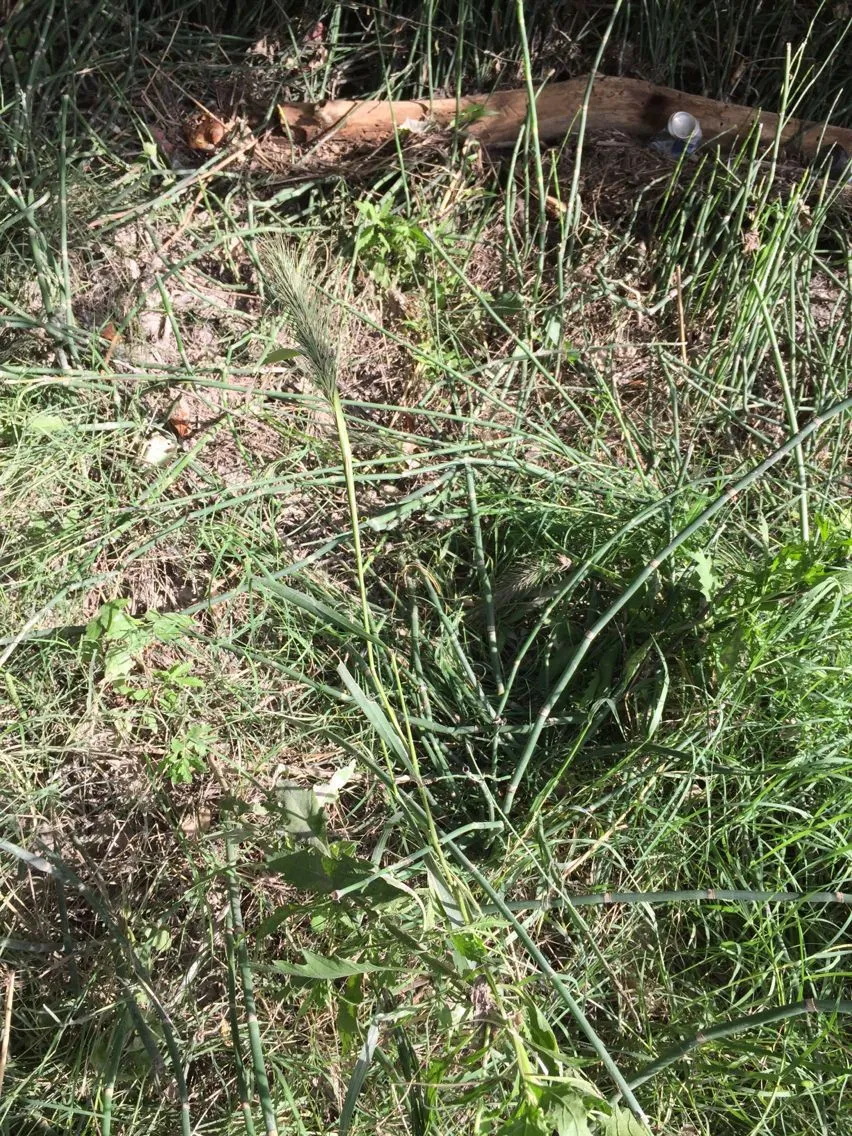
Author: L.
Bibliography: Sp. Pl.: 83 (1753)
Year: 1753
Status: accepted
Rank: species
Genus: Elymus
Vegetable: False
Observations: N. America
Canada wild rye, known scientifically as Elymus canadensis, is a vibrant and resilient member of the Poaceae family. Often recognized for its adaptability and widespread presence, this hardy grass species was first described in 1753 by the renowned botanist Carl Linnaeus, as noted in “Species Plantarum.”
Native to North America, Canada wild rye thrives across a diverse range of habitats, from prairies to woodlands and along riverbanks. Its ability to establish itself in various soil types, including sandy and loamy soils, makes it a valuable plant for soil conservation and habitat restoration projects. Its robust root system helps prevent erosion, making it integral for maintaining ecological balance in natural landscapes.
Characterized by its distinctive arching seed heads, Elymus canadensis typically grows between 2 to 5 feet tall. The flower spikes, often described as elegant and graceful, emerge in the summer, contributing to the plant’s ornamental appeal. These spikes feature long, bristle-like awns that add texture and visual interest to the plant, making it a favorite among gardeners and landscape architects aiming to create naturalized areas.
Ecologically, Canada wild rye plays a crucial role in supporting wildlife. It provides cover and food for various bird species and serves as a host plant for several butterfly and moth species, underpinning its importance in the local ecosystem. Furthermore, its seeds are a food source for small mammals and birds, enhancing its value beyond aesthetic and soil conservation purposes.
In addition to its ecological benefits, Elymus canadensis is also appreciated for its ease of growth and low maintenance requirements. It is a perennial grass that can withstand both drought and moderate shade, though it flourishes best in full sun. This resilience makes it an excellent choice for gardeners looking for sustainable and low-input plants.
In summary, Canada wild rye (Elymus canadensis) is a multifaceted grass species celebrated for its ecological significance, adaptability, and aesthetic value. With a rich history dating back to Linnaeus’ initial classification, this versatile plant continues to be a cornerstone in conservation efforts and ornamental gardening across North America.
Eng: canada wild rye, great plains wild rye, canada wildrye, great plains wildrye, nodding wildrye
Dan: canadisk hundekvik
Swe: kanadaelm, borstelm
Ces: pýrovník kanadský
Fra: élyme du canada
Nno: kanadakveke
Nob: kanadakveke
En: Canada wild rye, Great Plains wild rye, Canada wildrye, Nodding Wild Rye, Wiegand’s Wild Rye, Wiegand’s wildrye, Great Plains wildrye, Nodding wildrye
Cs: Pýrovník kanadský
Da: Canadisk hundekvik
Fi: Kanadanvehnä
Fr: Élyme du Canada
De: Kanada-Quecke, Kanadische Haargerste
Nb: Kanadakveke
Nn: Kanadakveke
Pt-br: Centeio-silvestre-do-Canadá
Sv: Kanadaelm, Borstelm
© copyright of the Board of Trustees of the Royal Botanic Gardens, Kew.
Taken Sep 15, 2022 by Josef Slavicek (cc-by-sa)
Taken Jun 5, 2015 by EOL − Jim Varnum (cc-by-nc)
Taken Jun 4, 2022 by Robert Pavlat (cc-by-sa)
Taken Jan 1, 1900 by EOL − USDA NRCS Wetland Science Institute. (public)
Taken Sep 22, 2022 by Erin Isaac (cc-by-sa)
Taken Aug 6, 2015 by EOL − Jim Varnum (cc-by-nc)
Taken Jun 28, 2015 by EOL − Linda Jo Conn (cc-by-nc)
Taken Jul 16, 2015 by EOL − Jim Varnum (cc-by-nc)
Taken Aug 15, 2021 by Wisconsin Hiker (cc-by-sa)
Taken Aug 15, 2021 by Wisconsin Hiker (cc-by-sa)
Taken Jul 10, 2020 by Irène durville (cc-by-sa)
Taken Jan 1, 1900 by EOL − John Hilty (cc-by-nc)
Taken Oct 17, 2018 by Sabine Wagener (cc-by-sa)
Taken Sep 8, 2022 by Jesse Corriveau (cc-by-sa)
Taken Jul 21, 2021 by Anne Sales (cc-by-sa)
Taken Sep 30, 2017 by Beverly Patrick (cc-by-sa)
Taken Apr 28, 2017 by Tela Botanica − _ (cc-by-sa)
Taken Jul 18, 2020 by Ken Borgfeldt (cc-by-sa)
Taken Jul 6, 2015 by EOL − Sam Kieschnick (cc-by-nc)
Taken Jul 4, 2015 by EOL − Linda Jo Conn (cc-by-nc)
Taken Jul 4, 2015 by EOL − Linda Jo Conn (cc-by-nc)
Taken Jun 28, 2015 by EOL − Linda Jo Conn (cc-by-nc)
Taken Jul 16, 2015 by EOL − Sam Kieschnick (cc-by-nc)
Growth form: Bunch
Growth habit: Graminoid
Growth rate: Rapid
Ph maximum: 7.9
Ph minimum: 5.0
Family: Myrtaceae Author: (F.Muell.) K.D.Hill & L.A.S.Johnson Bibliography: Telopea 6: 402 (1995) Year: 1995 Status:…
Family: Rubiaceae Author: Pierre ex A.Froehner Bibliography: Notizbl. Bot. Gart. Berlin-Dahlem 1: 237 (1897) Year:…
Family: Sapindaceae Author: Koidz. Bibliography: J. Coll. Sci. Imp. Univ. Tokyo 32(1): 38 (1911) Year:…
Family: Asteraceae Author: A.Gray Bibliography: Pacif. Railr. Rep.: 107 (1857) Year: 1857 Status: accepted Rank:…
Family: Fabaceae Author: Medik. Bibliography: Vorles. Churpfälz. Phys.-Ökon. Ges. 2: 398 (1787) Year: 1787 Status:…
Family: Aspleniaceae Author: (Cav.) Alston Bibliography: Bull. Misc. Inform. Kew 1932: 309 (1932) Year: 1932…